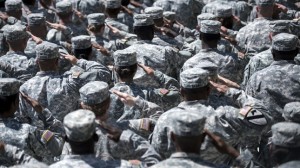
Downsizing the Army: What Are the Consequences?
The blogger Angry Staff Officer writes at taskandpurpose.com that
Today, the Army is facing a drawdown to 450,000 soldiers, the smallest it has been since before World War II.
A challenge, but not one without precedent. The example most worth study is that of the Army after World War I when it
mobilized active, National Guard, and draftee divisions; trained them; and put them overseas in France to carry out protracted campaigns — all in less than a year. At its height, the Army of 1918 swelled to 2.5 million men and women. By 1920, however, the Army had dropped down to barely 200,000 men, with only 56,000 in the National Guard. Further cuts in 1922 and 1923 left the Army at 133,000. Larger than the Army of 1916, but a far cry from the Army that led the American Expeditionary Force in France during the world war. What happened?
Angry Staff Officer considers this question, in detail and not all of his answers are discouraging. The very small US army of the period between the wars was exceedingly professional and served as a kind of cadre when the need for a vastly large force became clear. Officers like Patton, Eisenhower, and Marshall were in place. The Army’s most serious problems in those times were no so much with personnel and …




